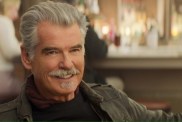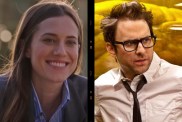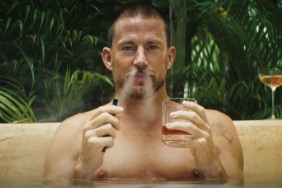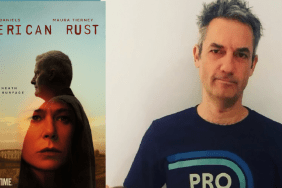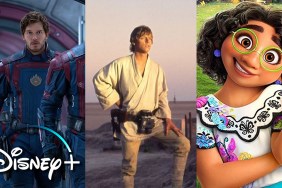I am expecting my Blu-ray review copy of Christopher Nolan’s Inception any day now and while I have Oscar screeners and Criterion Blu-rays to dig into I can’t help but feel it will find its way to the top of the pile. However, before it gets here, a couple of new interviews with Nolan have opened up the dreamspace discussion all over again and unlike what Michael Caine did back in October, Nolan maintains the ambiguity of the film’s ending, although he does tie up a few loose ends.
In October, Caine seemed to feel he had it all figured out saying, “[The spinning top] drops at the end, that’s when I come back on. If I’m there it’s real, because I’m never in the dream. I’m the guy who invented the dream.” Fortunately, this proves to simply be Caine’s interpretation as Nolan is quick to point out, that while he has a clear idea of what is going on in the film, the film never clearly tells you.
Talking with Entertainment Weekly Nolan said, “I get a lot of questions like, ‘Okay, did this thing earlier in the film mean that it’s all true, or does this other thing at another point in the film mean that it’s all a dream?'” He then adds, “There can’t be anything in the film that tells you one way or another because then the ambiguity at the end of the film would just be a mistake. It would represent a failure of the film to communicate something. But it’s not a mistake. I put that cut there at the end, imposing an ambiguity from outside the film. That always felt the right ending to me — it always felt like the appropriate ‘kick’ to me… The real point of the scene — and this is what I tell people — is that Cobb isn’t looking at the top. He’s looking at his kids. He’s left it behind. That’s the emotional significance of the thing.”
Is it just me, or might it be significant when Nolan says “it always felt like the appropriate ‘kick’ to me”? I don’t know, food for thought… Moving on…
Nolan made a similar statement in an interview with Wired saying, “People who have kids definitely read [the ending] differently than people who don’t. Which isn’t the same as saying there’s no answer. Sometimes I think people lose the importance of the way the thing is staged with the spinning top at the end. Because the most important emotional thing is that Cobb’s not looking at it. He doesn’t care.”
This has always been obvious, but as I discussed in my “Wake Up! Let’s Talk about ‘Inception’ — Here’s My Interpretation” piece, in which I detail my take on the film’s ending — a take I still firmly believe in — the fact Cobb (Leonardo DiCaprio) doesn’t care whether the spinning top falls or not is only part of the question. With Nolan saying it doesn’t matter if the top falls or not because Cobb doesn’t care doesn’t answer whether or not the final scene in the film is a dream or if it’s reality, a fact that could change your entire interpretation of the whole film. And when Wired’s Robert Capps suggests maybe Nolan doesn’t even know, he quickly replies, “Oh no, I’ve got an answer.”
“I think the only way to make ambiguity satisfying is to base it on a very solid point of view of what you think is going on, and then allow the ambiguity to come from the inability of the character to know, and the alignment of the audience with that character.”
“I’ve always believed that if you make a film with ambiguity, it needs to be based on a sincere interpretation,” Nolan said. “If it’s not, then it will contradict itself, or it will be somehow insubstantial and end up making the audience feel cheated. I think the only way to make ambiguity satisfying is to base it on a very solid point of view of what you think is going on, and then allow the ambiguity to come from the inability of the character to know, and the alignment of the audience with that character.”
Okay, so there is an answer, but he’s made the film in such a way that the film definitely doesn’t offer up a definitive one, at least not an answer that can be sorted out by looking at the clues and saying, “Ah ha, that’s definitely it, end of discussion!” However, that isn’t stopping people from trying.
On my third viewing of the film one thing I paid close attention to was Cobb’s wedding ring. He appears to only wear it in the dream world. However, there was one scene, close to the end, where he is supposedly in the dream world that I never saw it. So, I can’t use this as a definitive clue… Yet.
Another idea people look to are Cobb’s children, and this is theory Nolan does address, but it has also been addressed previously when costume designer Jeffrey Kurland told Clothes on Film, “The children’s clothing is different in the final scene… look again…”
The idea Cobb’s children were wearing the same clothes was one that had people coming up with certain theories. Another was whether or not they were the same children as we saw earlier in the film through Cobb’s memory flashbacks. An IMDB cast listing showing two sets of actors threw that theory out the window, but Nolan is also quick to reiterate the point.
“Yes, two sets of kids!” he tells Wired. “The younger version of the boy is actually my son, and it’s not him who turns around at the end. There’s no ambiguity here.”
“I was attempting to portray somebody trying to visualize something that they can’t visualize. It’s a combination of memory and imagining and dream…”
When asked if he used the second set of kids only at the very end or if he interchanges the two sets somewhere else in the film he says, “I don’t want to specify too much… I was attempting to portray somebody trying to visualize something that they can’t visualize. It’s a combination of memory and imagining and dream, and all the different ways in which we as human beings are able to visualize things. The way in which kids appear throughout the film is a strenuous attempt to play with that.”
This is a fascinating answer because it takes us all the way back to the ending of the film and whether or not it was a dream or not. In my Inception interpretation article I asked readers whether they thought the film ended in a dream or in the real world, and after 3,861 votes so far 2,362 people (61%) believe it ends with Cobb dreaming.
This was actually my interpretation as well, but I read it as Cobb having an actual dream. He was finally able to dream on his own again without the dream machine. The dreamlike quality of the end of the film led me to this conclusion and he was also finally able to see his children’s faces. Additionally, I think an answer Nolan gives regarding the children’s clothing, and how he was trying to use the children, supports my interpretation.
Nolan admits the clothes on the two sets of children are “very similar but not the same.” Combine that with the quote I mentioned above where he says, “I was attempting to portray somebody trying to visualize something that they can’t visualize. It’s a combination of memory and imagining and dream, and all the different ways in which we as human beings are able to visualize things.” Notice, he never says “reality.” This, to me, means at the end of the film Cobb is visualizing his children at an older age, but his visualization still has them similarly clothed. So we never really see Cobb’s actual children, we only see manifestations of his memories and what he imagines they will look like when he sees them again, which is why they are still in the exact same spot as he last remembers them being.
| [poll id = “125”] |
So does the top fall or not? I agree, it doesn’t matter. In my interpretation it doesn’t matter. It can keep spinning or stop two seconds after the film cuts to black. I don’t care because to me the final scene in the film is a dream, but it’s a dream unlike any other in the film. It’s a real dream, one that’s not artificially induced or manipulated. That, to me, is the genius of it and I am anxious to watch it again on Blu-ray and see if my theory still holds up.
If you have yet to preorder the DVD or Blu-ray for yourself, you can order the Blu-ray by clicking here ($24.99) and the DVD by clicking here ($16.99).

